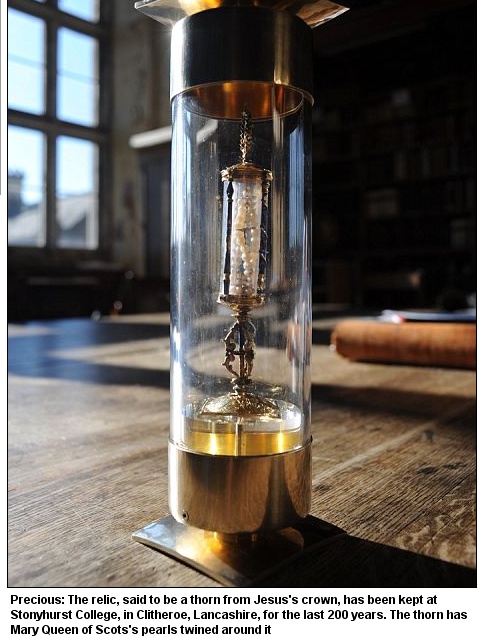It was plundered in the Fourth Crusade, sold to French royalty and has spent the past 200 years in safekeeping at a British public school.
Now a relic claimed to be a thorn from Jesus’s crown is to go on display at the British Museum.
And while no one can doubt the item’s rich history, there is less evidence to support the claims of its provenance.
The Crown of Thorns is said to have been seized from Constantinople, the imperial capital of the Roman Empire, in the Fourth Crusade – around AD 1200 – and was later sold to King Louis IX of France while he was in Venice.
King Louis kept the religious relic in the specially-built Saint Chapel and thorns were broken off from the crown and given to people who married into the family as gifts.
The thorn at Stonyhurst College – a 400-year-old Jesuit boarding school – was said to have been given to Mary Queen of Scots who married into the French royal family and she took it with her to Holyrood in Edinburgh.
And following her execution in 1587, it was passed from her loyal servant, Thomas Percy, to his daughter, Elizabeth Woodruff, who then gave it to her confessor – a Jesuit priest – in 1600.
The Jesuits brought it with them to the college and it has been kept at the Ribble Valley college ever since.

If it really is from the crown of throns, then there would be blood on it. Blood = DNA. DNA sample = cloning! Would that be wrong? Or is that how the second coming might play out?
It would be really exciting if there was a hint of authenticity to this relic, but, just as with the Shroud of Turin, the thorns appear, for the first time, with a chain of ownership, 1200 years after Christ's death. As I recall, the Emperor Constantine owned the nails used in Christ's crucifiction and he had them melted down and made into a bit for his horse. After the Romans sacked Jerusalem in 66 A.D. it doesn't seem likely we will ever find any definitive relics connected to Christ's time on earth. It is also ironic that the thorns were pillaged by Christian crusaders when they looted the Christian city of Constantinople. Were these people on a holy crusade or merely thugs on a road trip?